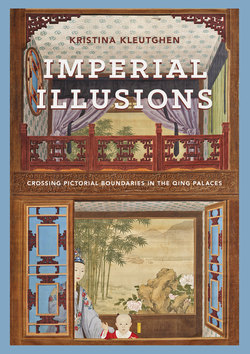Читать книгу Imperial Illusions - Kristina Kleutghen - Страница 51
На сайте Литреса книга снята с продажи.
Оглавлениеfree.’ Their painting is all about shading, volume, and resemblance, and is achieved by laboriously following convention. It’s the same with signatures. We sign at the top [that is, conspicuously] while they sign at the bottom. The use of the brush is also different in all respects.”61 Wu may have frequently expressed his strong faith in Christian devotional poetry, but for his painting, the style and subject matter associated with his classical Confucian education proved stronger than the imported styles and subjects associated with his faith. To Chinese critics, any visible evidence of European inspiration or Christian subject matter in Wu’s works would have suggested a technical rather than expressive achievement, making it unlikely that later writers would have considered him one of the Six Masters of the Qing dynasty.
Despite the pervasive literati rejection of Western realism, the seventeenth and eighteenth centuries saw a revival of ruled-line architectural painting (jiehua, literally “boundary painting,” figure 1.6), a style and pictorial sense that epitomized Northern Song realism. These paintings required straightedges to create meticulously detailed images of buildings with fine straight lines that recede diagonally into the distance, resulting in paintings that can resemble Western perspectival paintings.62 Ruled-line architectural paintings do not rely on geometry, however, and retain the uptilted ground plane of isometric perspective. The orthogonal-like lines recede in sharply diagonal parallels that rarely converge; if they do, the point of convergence often occurs too far outside the picture plane to be significant to the painting itself. Despite these differences, jiehua was visually close enough to perspective that some even referred to European paintings as “Western-style jiehua,”63 thereby domesticating foreign works with Chinese terminology. The jiehua revival points to another disjunction between the literati ideal and popular interest; yet literati criticism of realism (whether Northern Song or Western) meant that period perceptions of both types of painting suffered from their shared reliance on tools and techniques. These were both seen as making the artist “ ‘other-dependent,’ on both technical tools and merely external truth, rather than inwardly on the cultural self,” which is precisely what the literati valued.64
Given that Matteo Ricci’s conversion campaign was originally aimed at the literati, his use of European works of art as some of the tools for conversion was destined to meet aesthetic resistance. Despite his progressive accommodation and acculturation policies, he did not understand that even if the Ming elite whom he courted enjoyed the novelty of the works and their volumetric appearance, they still considered them neither aesthetically valuable nor appropriate for true art. The scholar Jiang Shaoshu (fl. 1642–79) described the faces and robes of Ricci’s painting of the Madonna of St. Luke as lifelike and animated, but then subtly condemned the work when he noted that the “the dignity and elegance [of the figures] are such that a Chinese artisan painter [huagong] could not manage it.”65 Jiang may have assessed the skills of the artist who produced the Madonna as above those of an artisan painter, but simply by using this term he immediately categorized the Madonna as the product of a professionally trained technician rather than of a true artist (namely,
